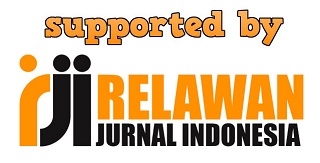DEVELOPING SIMPLE PRESENT TENSE MASTERY IN WRITING DESCRIPTIVE TEXT AT THE FIRST SEMESTER STUDENTS OF STISIP PERSADA BUNDA PEKANBARU
DOI:
https://doi.org/10.32520/eji.v4i2.1097Keywords:
Developing, present tense, descriptive textAbstract
The simple present tense is the most basic tense that should be mastered by the first semester students of STISIP Persada Bunda Pekanbaru. Moreover, descriptive text is one of the text types which use the present tense. Descriptive text is used by the researcher as the text that let the students apply their ability in using the present tense. However, most students still face difficulties in using present tense in writing descriptive text. Thus, the researcher conducted the study entitled "Developing Students Simple Present Tense Mastery in Writing Descriptive Text at The First Semester Students of STISIP Persada Bunda Pekanbaru.” This research aimed to identify the most dominant students' errors and to describe the factors causing students' errors in using present tense in writing descriptive text first semester students of STISIP Persada Bunda Pekanbaru. The study was used mixed methodology as the research method. The population were the first semester students of STISIP Persada Bunda Pekanbaru. In collecting the data, the researcher used the students' writing products in using present tense in writing descriptive text and the questionnaire. The study was showed two points; through the students' writing products would result in the students' errors and the questionnaire would show the factors causing students' errors in using present tense in writing descriptive text. Based on the research findings showed that the most dominant students’ errors were misformation errors with 56 items (62,92%). Moreover, based on the questionnaire could be concluded that the factors causing the students' errors in using the present tense in writing descriptive text were interlingual transfer and intralingual interference.
References
Arvani, Mansour., and Tabriz. (2006). “A Discourse Analysis of Business Letters Written By Iranians & Native Speakers.” The Asian ESP Journal, June Vol.1. Article 2.
Ary, Donal., et al. (2010). Introduction to Research in Education. Wadsworth.
Brown, Douglas H. (2010). Principles of Language Learning and Teaching Fourth Edition, New York: Longman Inc.
Brown, Douglas H._____. Teaching by Principles: an Interactive Approach to Language Pedagogy (2nd Ed): Longman.
Burdová, Veronika. (2007). English for Specific Purposes (Tourist Management and Hotel Industry). Masaryk University Faculty of Education Department of English Language and Literature.
Carey, John A. (2002). Business Letter for Busy People, 4th Edition. The Caree Press, USA.
D, Gould. E. et.al. (1989). The Act of Writing, New York: Random House.
Dierkes, Meinolf; Hans Weiler and Ariane Antal. (1987). Comparative Policy Research. Gower.
Donn, Byrne. (1979). Teaching Writing Skill. England: Long Man.
Dulay, Heidi., et al. (1982). Language Two. New york: oxford university press.
Fauziati, Endang. (2002). Teaching English as a Foreign Language. Surakarta: Muhammadiyah University Press.
George E. Whison and Julia M. Burks.______. Let’s Write English Revised Edition, Van Nostrand Reinhold Ltd.
Harmer, Jeremy. (2007). How to Teach Writing. England: Longman.
Herlina. (2012). “The Effectiveness Of Using Concept Mapping In Writing Recount Paragraph Toward The Students’ Writing Ability At The Tenth Year Of Sma Muhammadiyah 1 Tumbang Samba Katingan Tengah.” State Islamic college of Palangka Raya Department of Education Study Program of English Education.




















